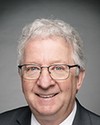There's a last thing I have to say, and then I'll switch it over if there's any time.
Mr. Carr, you mentioned the CAST system. I'm wondering if we can get that information provided to our committee.
Evidence of meeting #24 for Fisheries and Oceans in the 42nd Parliament, 1st session. (The original version is on Parliament’s site, as are the minutes.) The winning word was miramichi.
Conservative

Todd Doherty Conservative Cariboo—Prince George, BC
There's a last thing I have to say, and then I'll switch it over if there's any time.
Mr. Carr, you mentioned the CAST system. I'm wondering if we can get that information provided to our committee.
Executive Director of Research, Atlantic Salmon Federation
Yes, certainly. There's an application through ACOA as well. I think there might be some money coming down through that. Rather than elaborate, we'll certainly send that information along. That's great.
Conservative

Mel Arnold Conservative North Okanagan—Shuswap, BC
Thank you.
Thanks, everyone, for being here this morning. I'll quickly get into it.
I'll give you a little bit of my background. I was with the BC Wildlife Federation, so wildlife management issues and fisheries issues are dear to my heart. We've seen issues in British Columbia with predator management and with wolves in particular. In most of the province, our moose populations have dropped by about 60%. Some would say that it's because of the reluctance of the government to react and to do wolf management programs and so on.
We've also heard seals being referred to as the “wolves of the sea”. I certainly don't want to promote a seal cull, but because we're seeing the salmon populations drop to such critical levels in some areas, have we reached a point where we do have to manage other species proactively in order for the salmon to get past that critical threshold and reach critical mass where they're going to be able to multiply?
Would most of you agree with that? Is there anybody who wouldn't? I'm not trying to put words in your mouth. I want to make sure that if that's actually the case, the information we're hearing reflects that.
Director, Maritime Seal Management Inc.
I'd like to answer that question, Mr. Chairman, if I could.
In terms of grey seals, there's absolutely no reason to proceed with any kind of cull. We, and other groups like us, have formulas that are clearly viable for total use of the animal harvest that produces products, and along with the ecological benefits are self-sustaining solutions.
There really is no need for a cull. There's ours, and I know there are other proposals on the table to provide solutions to the grey seal predation problem.
NDP

Gord Johns NDP Courtenay—Alberni, BC
Thank you.
My name is Gord Johns. I'm a New Democratic member of Parliament for Courtenay—Alberni on Vancouver Island. We have a lot of similar issues that you're facing today, in terms of the threat to our salmon on the west coast.
Before I get started, I want to also acknowledge the traditional territory of the Mi'kmaq. Thank you, Chief Ginnish, for welcoming us to your territory. It's an honour to be here.
We were just in Newfoundland studying the cod. We talked a lot about adjacency and ensuring that local communities are not just accessing quota but managing the fishery. You talked earlier about Canada's obligation to respect the aboriginal rights entitlement around fish.
You've probably heard that where I'm from there was a court case, which has been over 10 years, that the Nuu-chah-nulth won. It established their right to catch and sell fish. Canada is just starting to come to the table to have those conversations.
Maybe you can share a little more about what you'd like to see in terms of how we move forward in co-management.
Chief, Eel Ground First Nation
Absolutely.
To begin to have a process of management for the entire system would seem to make a lot of sense, to not look at any species in isolation, and to actually have first nations traditional knowledge, science at the table, as part of that discussion. It's being really meaningfully involved with that, not one-off meetings now and again, which really don't get you at the table with the people who are making the decisions. Even after 149 years, we're hopeful that we can discuss a process that works and be part of that. That's huge.
The salmon are so important to us, and we've watched the bass numbers explode over the past five years. It would seem logical that DFO should sit down with the first nations on the river, and the other user groups, and look at the predation, look at what we can do in this system, in this watershed, to improve the habitat for the salmon, improve the returns. We will all benefit if that happens.
There are things that could be done that we're not doing now. There's the offshore commercial fishery that first nations.... We have no contact with NASCO, or any of those discussions that are happening internationally. We probably should be at that table to be part of that larger strategy.
We can't help but think back. My grandfather had a commercial salmon licence for a very short period of time. It was probably two years before the fishery was shut down. In the fifties and sixties, he would have to sneak down to the river to feed his family. This was after your tribe, your people, have utilized that resource, and sustainably, for thousands of years. To be put in that position, and to see all the commercial activity happening on the river and not be part of it has so much to do with where our communities are in regard to development economically. We haven't had that opportunity.
Marshall is only a few years to the table—initial implementation—but there is still so much that needs to be done to get to the point where there's moderate livelihood, so that our requirements are spread over a species, over the entire watershed, and not dependent on a single species.
In our case, the salmon are right by our doorstep. It's available. If people are hungry, they're going to fish it. As long as it isn't a conservation issue, I'm going to support them fishing it.
NDP

Gord Johns NDP Courtenay—Alberni, BC
Thank you.
We say back home, and I said it earlier today, that the health of our salmon reflects the health of our communities.
NDP

Gord Johns NDP Courtenay—Alberni, BC
You talked about five of your communities being, socio-economically, in the lowest 10 communities in our nation. It's important. It's critical, so I am glad to be hearing about that.
I want to ask you all so many questions, but I am limited in time. I have a quick question for Mr. Carr.
We talked about salmon farming. The potential impacts of GMOs and the concerns around escape have come up often. You called for a moratorium while we do the right science and do the work.
I want to ask you also about the role of DFO. We often hear that the role of DFO is to promote industry, but also to protect our wild fish. Do you have any thoughts on that?
Executive Director of Research, Atlantic Salmon Federation
Many times when we are at the table talking to DFO, we feel there is a conflict of interest. Sometimes they'll have the aquaculture hat on, and then they take it off and put the wild hat on. We find that to be troublesome and really difficult, at times, in terms of negotiations and working, because of where the interests lie. We feel there really should be a separation within DFO. They should be one or the other, but not both. A lot of conflicts have arisen from that, and it's something that we really feel should change.
NDP

Gord Johns NDP Courtenay—Alberni, BC
Ms. Paul, you talked about salmon enhancement and your investments in getting that started. How are you funding that? Is there funding that's coming through DFO?
Consultation Coordinator, Kingsclear First Nation, As an Individual
Most of the funding comes through AAROM, so the Maliseet Nation Conservation Council are the ones who conduct it on our behalf. They weren't able to be here, but I can share their reports with you if you want, so you can better understand.
NDP

Gord Johns NDP Courtenay—Alberni, BC
Is there enough investment coming to you to really get a program going?
Science Officer, North Shore Micmac District Council Fisheries Centre, Eel Ground First Nation
I can answer that. I am involved with AAROM here locally for the Mi’kmaq.
The money supplied to our AAROM is vastly insufficient. It really covers only our operational costs and the extensive reporting requirements brought down from DFO. The people we do have staffed in our AAROM literally spend almost 365 days a year writing reports for the money we receive. That money cannot be put towards projects, so then we have to go and seek alternate funding through the aboriginal fund for species at risk, the habitat stewardship program, and stuff like that, to get done the research that we want.
Now, I don't think that was the intention of the AAROM program going in, but there is definitely a need for increased, reliable funding that we don't have to apply for year in and year out, in hopes that we are going to get that small piece of the pie that is then allocated to us through these various programs. Consistent funding in that area would definitely help establish these programs, which could go on reliably year after year so that we don't have to worry about the funding drying up because they can't fund it multiple years. Afterwards they look at you and say, “Well, you've done this project for three consecutive years. We can't fund it anymore, because you need to do something else.”
Thank you.
Liberal

The Chair Liberal Scott Simms
Thank you, Mr. Ward.
Colleagues, we are running into double overtime, so I propose a choice. We can either go ahead with short questions and clarifications to sum up, or we can offer a round of five, five, and three.
Conservative
Liberal

The Chair Liberal Scott Simms
Can I ask you to do your clarification questions within that five minutes? Okay.
Sorry, colleagues, we have to get through the timing issue.
Nevertheless, we will now go to Mr. McDonald, for five minutes.
Liberal

Ken McDonald Liberal Avalon, NL
Thank you, Mr. Chair.
Again, thank you, everybody, for coming as witnesses before the committee today.
I would first like to seek an explanation from Mr. Mahendrappa. I asked about what I would call a seal harvest. I certainly don't support a cull. I do think that a controlled harvest is needed. Since you brought that up as being a part of what you'd like to do, and apparently you have a way to do it so that there is no wastage from it, could you expand on this and let us know exactly how you plan to do it and what type of uses you would have....
Director, Maritime Seal Management Inc.
Absolutely. We'll start by talking about harvest methods themselves. The method that's currently advocated under the DFO system is essentially to shoot them. There's a three-step process involving shooting them, palpating, and bleeding them out, which is very good. What we've proposed, based on field tests that some of the harvesters have done, is a system for trapping the grey seals when they're hauled out. That would make the harvest more efficient. It would enable a much larger number of animals to be taken and held in an area without ending their lives. This allows for a more selective harvest, a more controlled harvest.
Then, we have various options at that point in terms of how to harvest and process the animals. You could look at using firearms, as has been done conventionally. You could look at using electricity, which is an internationally accepted humane method of harvesting. You could look at CO2 gas, which has also been tested extensively and widely approved as a humane method of harvesting.
In terms of the usage and the value realization, we'll break it down into blubber, pelts, and the remainder, for simplicity.
Blubber is by far the most valuable part of the animal. You get omega-3 oil from the blubber. It's a unique type of omega-3 that is only found in marine mammals and in human milk. One of the compounds is called DPA, docosapentaenoic acid. It's a unique omega-3 that can be derived. You can do it quite efficiently compared to other methods of deriving omega-3 from fish. There's a liquid market in the world. The market price of seal oil has risen dramatically in the last 18 months. It's very much a situation where there are more buyers than there is supply available. I say that the blubber is the most valuable part because it's the simplest part to derive value from and it has the clearest commodity-type liquid market for it.
Next in line in value would be the pelts. There are many options. We group our options and what we like to do with them into traditional aboriginal products, contemporary aboriginal products, and mainstream products. Under mainstream products, you have the fashion footwear and apparel segment, and accessories. There are some very high-value products made in this category. One of our corporate project partners is a gentleman named Bernie Halloran, who is a great guy. He's often considered the godfather of seal products. Nobody in Canada has worked with seal as long as he has. He's a great partner for us to have. He naturally has access to many markets. He has production capacity and a great deal of expertise. He's very much our partner and the go-to guy for contemporary products.
We have a renowned and critically acclaimed fashion designer who is Métis, Angela Demontigny. She is quite skilled at making both traditional aboriginal products and contemporary aboriginal products. We'd like to work with her under a program where we invite other aboriginal designers—aspiring designers perhaps—to participate. It offers a great scope of potential products that can be used.
Under our program, the way that we're looking at getting started means that to some extent those products would be used as showpieces as part of campaigns to build awareness of what we're doing, and the ecological reasons, the cultural traditions, and the aboriginal traditions that are underlying the harvest. That's value in the form of risk mitigation and awareness building. Certainly economic value from the sale of those products is also part of our equation.
In terms of the remainder, which encompasses meat, bones, blood, and organs—all the parts of the seal—there are options for those. Those options include using them as bait in the lobster and crab fisheries, which is interesting because it would reduce the burden on the herring stock. You're kind of getting a two-in-one benefit there. As you've reduced the population, you've created an alternative bait product. There's been testing done on the use of seal in the southern Gulf of St. Lawrence as bait, both for lobster and crab, and that testing has shown promising results.
Alternatively, you could look at things like making liquid fertilizer, for which there is a growing market. We have examined this and it seemed there is viability in using the product to generate humic matter to support agriculture.
There are many options. All parts of the animal could be used for any of those last three and then, of course, there's the food market for the meat, which is part of the nutritional benefit that first nations and other people would gain from what we've proposed.
Liberal

The Chair Liberal Scott Simms
First you had me hungry over bacon and scallops and now you have me hungry over seal flipper pie. Seal flipper pie—I don't know if anyone's ever had it—is good.
Mr. Arnold, you have five minutes.
Conservative

Mel Arnold Conservative North Okanagan—Shuswap, BC
I may not need the full five minutes, and if I have anything left, I'll pass it on to Mr. Doherty.
Basically, I think you answered one quick question that I had, and it was, is there a sustainable market for the products? But, beyond seal, on the striped bass, if there was an increase in harvest allowed there, and it sounds like there's a demand for it, it certainly would be put to full use as well if they could increase that. Is that correct?
The big question, and it's something we'll probably have to deal with more as a committee is, how do we strike a better balance when it comes time to change harvest numbers or change quotas, whether it be Atlantic salmon, seals, or striped bass, so that we don't always err on the side of caution to the point where now, for example, the striped bass have expanded to the point where they're negatively impacting the Atlantic salmon because we were cautious about the bass. Possibly we've been cautious for too long. Do you have any suggestions on how we can strike a better balance there and make those decisions perhaps a little sooner?
Executive Director of Research, Atlantic Salmon Federation
I don't know if I can answer what the exact management measures would be, but striking the balance in any case, whether it be striped bass, seals, or whatever, is important. I think when management decisions are made, we need to log the date and record how many striped bass are being taking from anglers if there's going to be a recreational fishery and how many are taken from a commercial fishery if it's going to be first nations. It's difficult to just say here's what we're doing because, if we don't track it, we don't know if it works, right?
I think it's really critical to track the numbers on whatever action is taken so that we can assess whether it's worked and make tweaks so that it gets done right.
Conservative

Mel Arnold Conservative North Okanagan—Shuswap, BC
I think that will echo back to what we've heard the last few days about the cod fishery. Fishermen out there who are on the water are saying there are cod everywhere that could be caught, but we're being cautious on the reopening or expansion of the quotas because of the precautionary approach. It's about getting that information in to monitor those catches, keel surveys, and so on, I think, from all sources.
I'll pass any remaining time on to Mr. Doherty.